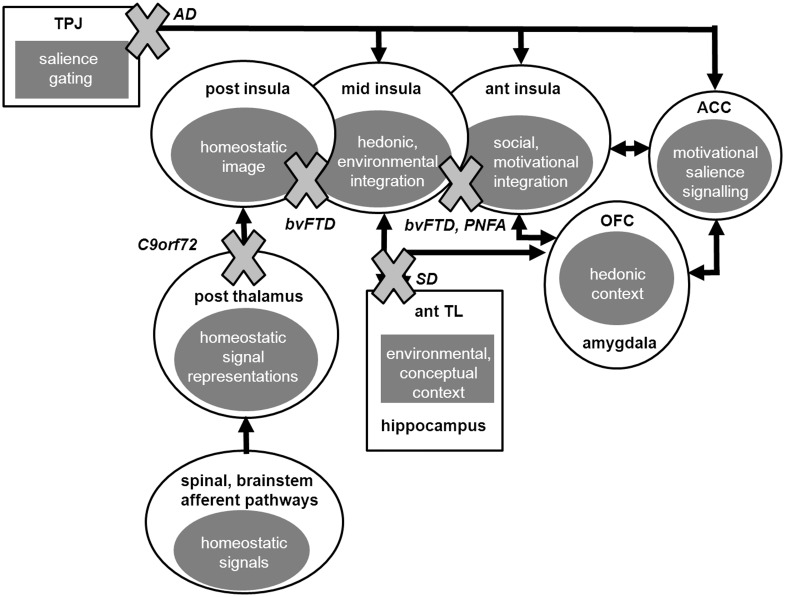Figure 2.
A schematic synthesis of the effects of dementia syndromes on pain and temperature processing. Based on present data and current formulations of central homeostasis (Craig, 2002, 2009; Höistad and Barbas, 2008; Borsook, 2012; Zhou and Seeley, 2014). Ellipses indicate core components of the homeostatic processing network, rectangles indicate linked brain regions that modulate processing of homeostatic signals and arrows signify predominant direction of information flow; anatomical regions are labelled alongside their putative roles in the processing hierarchy (grey filled ellipses) and dementia syndromes are labelled (italics) with grey crosses indicating the major locus of dysfunction in that syndrome. According to the proposed synthesis, C9orf72 mutations target early encoding of pain and temperature signals in thalamo-cortical circuitry; behavioural variant FTD disrupts the relay of body state information from posterior insula and both behavioural variant FTD and PNFA degrade its contextual integration in mid insula and more anterior regions; semantic dementia degrades anterior temporal lobe mechanisms that evaluate stimulus context; and temporo-parietal cortical damage in Alzheimer’s disease leads to abnormally enhanced gating and aberrant salience coding of homeostatic signals. Besides interruption of signalling pathways, degraded (e.g. temporally dysregulated) information flow may also contribute to network dysfunction (Craig, 2009). ACC = anterior cingulate cortex; AD = Alzheimer’s disease; ant = anterior; bvFTD = behavioural variant FTD; OFC = orbitofrontal cortex; post = posterior; SD = semantic dementia; TL = temporal lobe; TPJ = temporo-parietal junction.

